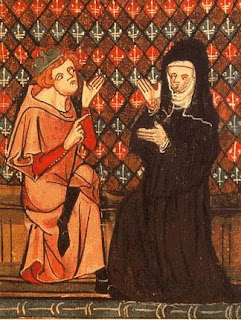WELCOME TO OUR SUMMER BOOK STUDY
I'm leading a live group over the hill in a study of Karen Armstrong's fascinating and occasionally provocative book A History of God. I invite our St. Aidan's community to join us online. Every two weeks, I'll post a reading assignment and a set of reflection questions.
Readers are encouraged to respond in the comments section below. Others may read the comments and add their own. Most of all, enjoy.
I'm leading a live group over the hill in a study of Karen Armstrong's fascinating and occasionally provocative book A History of God. I invite our St. Aidan's community to join us online. Every two weeks, I'll post a reading assignment and a set of reflection questions.
Readers are encouraged to respond in the comments section below. Others may read the comments and add their own. Most of all, enjoy.
READ: Introduction, Chapter 1, “In the Beginning,” Chapter 2 “One God.”
REFLECT: What does the word “God” mean to you? If you pray regularly, to who or what do you pray?
1. Armstrong begins her book with a quote from Fr. Wilhelm Schmidt: “In the beginning, human beings created a God.” What is your reaction to this statement?
2. List some of the images of God Armstrong describes in Chapter 1.
3. Armstrong writes about the Axial Age, a time of great change in religion and spirituality. Indeed, she has written an entire book about it, meaning here we get but a summary. She dates this time as 800-200 BCE, meaning it contains the Hebrew prophets, but not Jesus. The literature of this time includes Homer, Greek Tragedy, Bhavagad Gita, Tao te Ching, Confucius’ Analects. We will spend some time exploring the shift in consciousness which occurred. If you have favorite passages, please bring some to share.
4. Armstrong compares the inner focus of Hinduism with the outer focus of Western Monotheism. Do you agree?
5. On page 36 (47 in Kindle edition), Armstrong writes: [Plato’s] utterly static image of divinity would have an immense influence on Jews, Christians and Muslims, even though it had little in common with the God of revelation, who is constantly active, innovative and, in the Bible, even changes his mind, as when he repents of having made man and decides to destroy the human race in the Flood.
6. Another good quote (same page): We moderns experience thinking as an activity, as something that we do. Plato envisaged it as something which happens to the mind: the objects of thought were realities that were active in the intellect of the man who contemplated them. Like Socrates, he saw thought as a process of recollection, an apprehension of something that we had always known but had forgotten. Because human beings were fallen divinities, the forms of the divine world were within them and could be “touched” by reason, which was not simply a rational or cerebral activity but an intuitive grasp of the eternal reality within us. This notion would greatly influence mystics in all three of the religions of historical monotheism.
7. Compare the tragic image of humanity as fallen with the Buddhist teaching that dukkha, suffering, is the nature of life.
8. Reflect on some of the images of God Armstrong shares in Chapter 2.
9. The prophet Isaiah receives his vision of God, not as a result of spiritual exercises, but out of the blue. The prophetic experience leads not to knowledge, writes Armstrong, but action. (41-43/54-55)
10. Armstrong characterizes pagan vision as one of continuity with the natural world and prophetic vision as one of critique. Reflect.
11. On pages 62-65/77-81, Armstrong talks of two Old Testament sources: the Priestly tradition and the Deuteronomic tradition. Ponder the differences.
12. Bring your own reflections and questions! We’ll begin with these.



Comments
Post a Comment